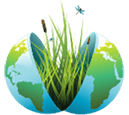
Old Woman Creek State Nature Preserve and National Estuarine Research Reserve
About
GENERAL INFORMATION
Criteria:
- Listed on more than one “valuable wetland” list by natural resource agencies or nongovernment organizations.
- Supports significant numbers of wetland-dependent fauna, such as water birds or fish
The Old Woman Creek National Estuarine Research Reserve and State Nature Preserve is a drowned stream mouth coastal wetland that is a meeting/mixing zone between Old Woman Creek and Lake Erie. As one of the few natural Lake Erie coastal wetland ecosystems, the Old Woman Creek Reserve and Preserve has federal and state protected area designations. Old Woman Creek is part of the National Estuarine Research Reserve System, a national network of 28 estuarine ecosystems that promote the stewardship of coastal resources using integrated research and education programs. The State of Ohio has designated Old Woman Creek as a State Nature Preserve. The Ohio state nature preserve system protects remnants of Ohio’s natural heritage.
Located 3 miles east of Huron near the southernmost point of the Great Lakes coastline, the majority of the 573-acre area is located south of U.S. Route 6 (Cleveland Road) and surrounds the coastal wetland.
The DeWine Center for Coastal Wetland Studies hosts the Reserve’s visitor center, laboratories, classroom facilities, and administrative offices. Since its designation as a Research Reserve in 1980, there have been 250+ published works based on research and sampling conducted at the area.
This Ohio reserve was the first Great Lakes-type estuary included within the reserve system. The site features freshwater marshes, swamp forests, a barrier beach, upland forests, and a riparian stream (Old Woman Creek). The reserve is a critical spawning and nursery ground.
Exemplary Ecosystem Services:
- Recreation (birdwatching, ecotourism)
- Carbon storage
- Water quality improvement
- Education
CONSERVATION STATUS AND THREATS
Conservation status: State/Province/Regional Protection
Adjacent Land Use: Agricultural (cropland, orchards, greenhouse)
Approximate natural buffer width: > 100 ft
ECOLOGY
General wetland characterization:
- Inland Shallow Fresh Marsh
- Inland Fresh Shrub Swamp
- Inland Fresh Wooded Swamp
Adjacent Water Bod(ies):
- Lake
- Stream
Name of body of water: Lake: Erie; Stream: Old Woman Creek
Surficial Geology: See Geology chapter of OWC Research Reserve site profile:
Soils: See Soils chapter of OWC Research Reserve site profile:
http://wildlife.ohiodnr.gov/portals/wildlife/pdfs/public%20areas/2nd%20Ed.%20Chapter%203%20Soils.pdf
FLORA AND FAUNA
Dominant flora: In the wetland, aquatic emergent vegetation (nelumbo lutea, typha sp., bur-reed, bullrush, arrowhead, and SAV (e.g., coontail). Shrub scrub (e.g., Cornus sp.) transitioning to a mixed oak-hickory forest in upland areas.
Unique flora: sagittaria rigida; sea side spurge, purple sand grass, sea rocket (all state listed)
Dominant fauna: Fish: sunfish and forage fish species, primarily; Birds: songbirds, marshbirds, and waterfowl
Rare fauna: Nesting bald eagles since 1995; Prothonotary warbler; Eastern Fox Snake
ADDITIONAL INFORMATION
Ecology of Old Woman Creek Estuary and Watershed
Effectiveness of a Coastal Wetland in Reducing Pollution of a Laurentian Great Lake: Hydrology, Sediment, and Nutrients
Nutrient Dynamics in Great Lakes Coastal Wetlands: Future Directions
Images



